PRE-RELEASE
Diagnostics communication
| Diagnostics communication |
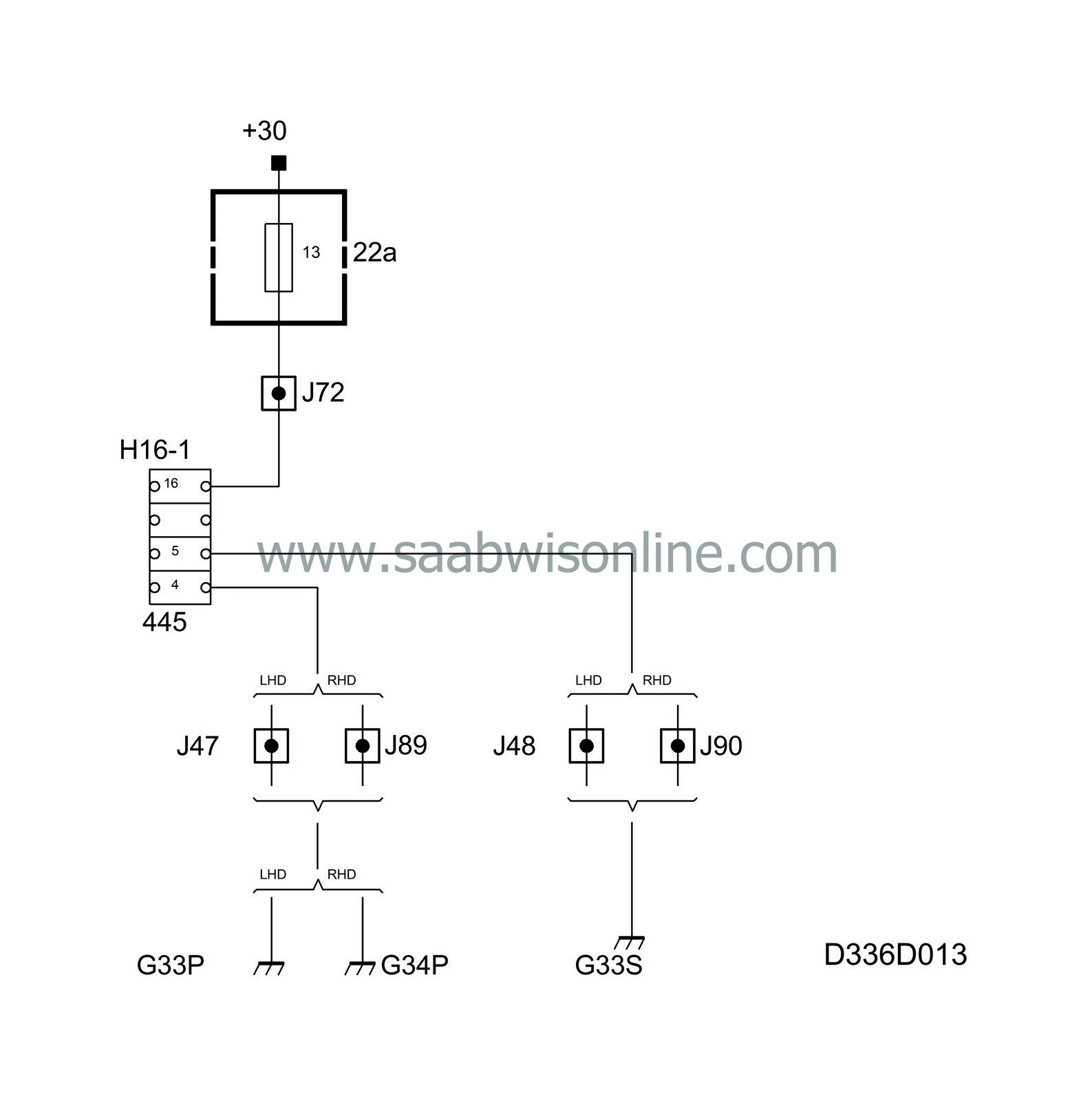
The data link connector is powered with +30 on pin 16 via fuse 13.
The data link connector pin 4 is grounded from grounding point G33P/G34P.
The data link connector pin 5 is grounded from grounding point G33S.
| TCM |
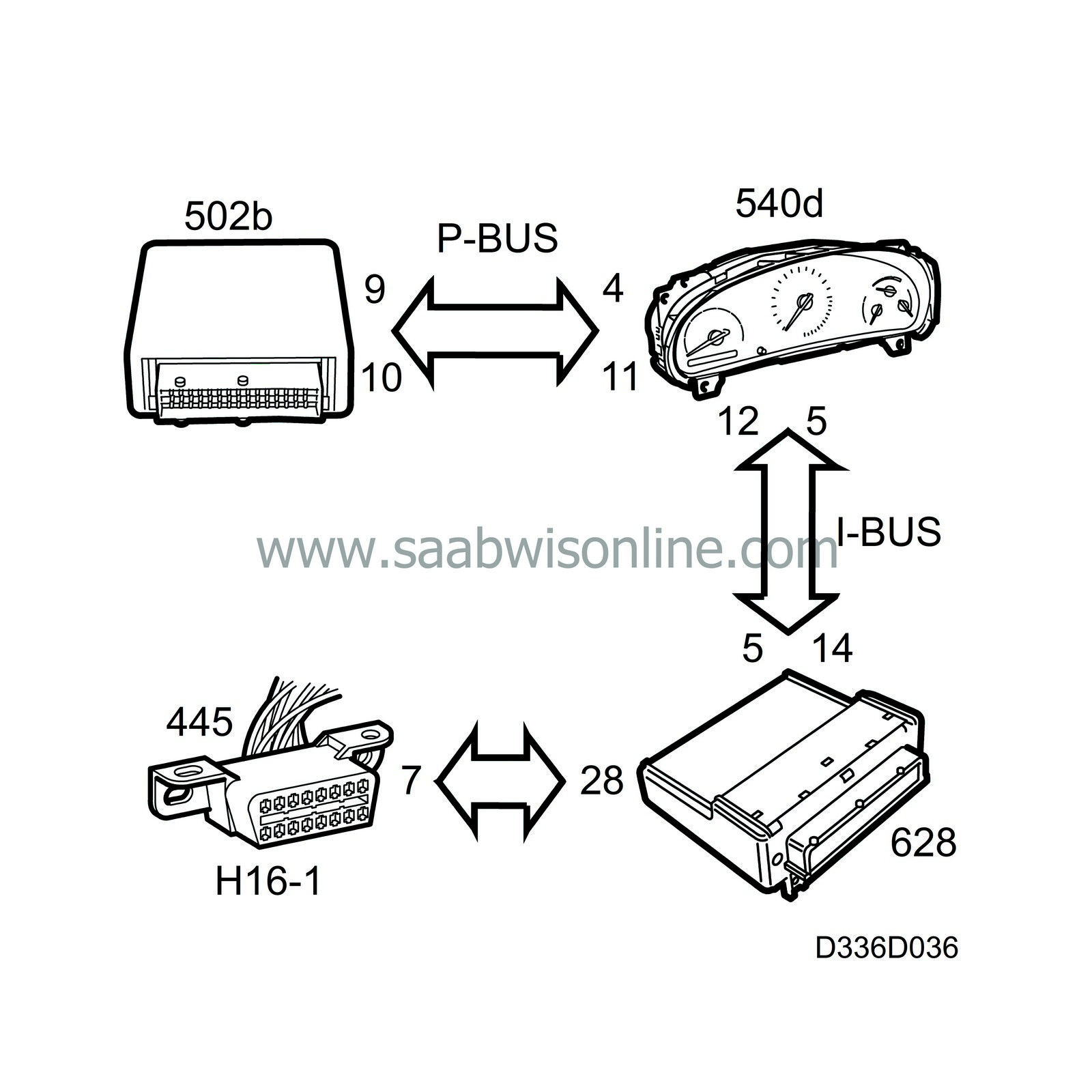
If TCM is contacted, the diagnostic tool will first call DICE and request diagnostic communication with TCM. DICE transfers the diagnostic tool request to the I-bus, whereby MIU will transfer the diagnostic request to the P-bus and TCM.
This means that DICE and MIU must both be powered (awake) in order to contact TCM.
Diagnostics
If none of the bus systems can be contacted then the fault must be either in the car or in the diagnostic tool.If the diagnostic tool can make contact with any of the systems concerned in another car, the fault will be in the car.
For further information on fault diagnosis of diagnostic communication with DICE or any other bus-connected system
see Diagnosing the bus

| DICE and all systems connected to the bus except the diesel engine control module |
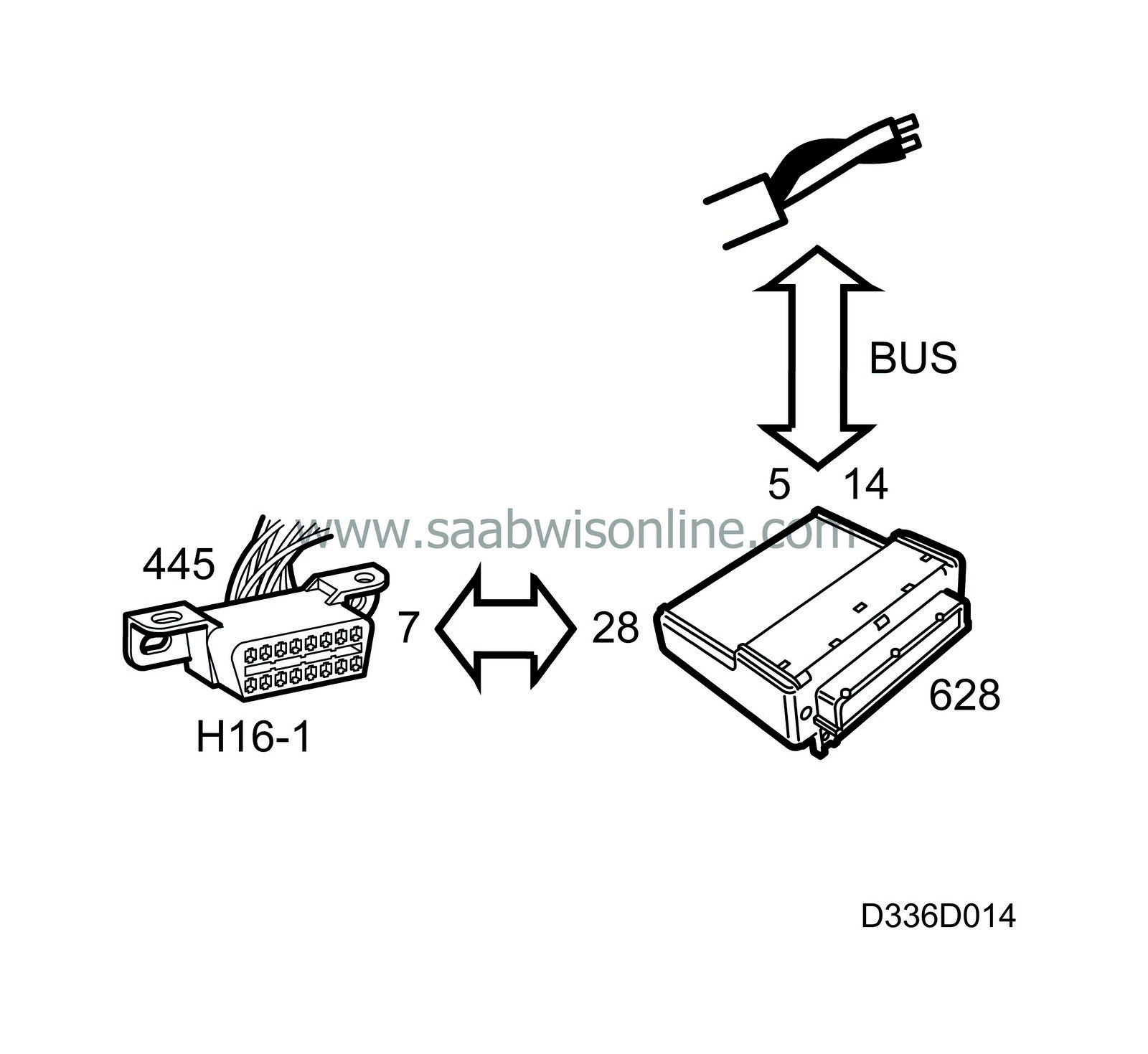
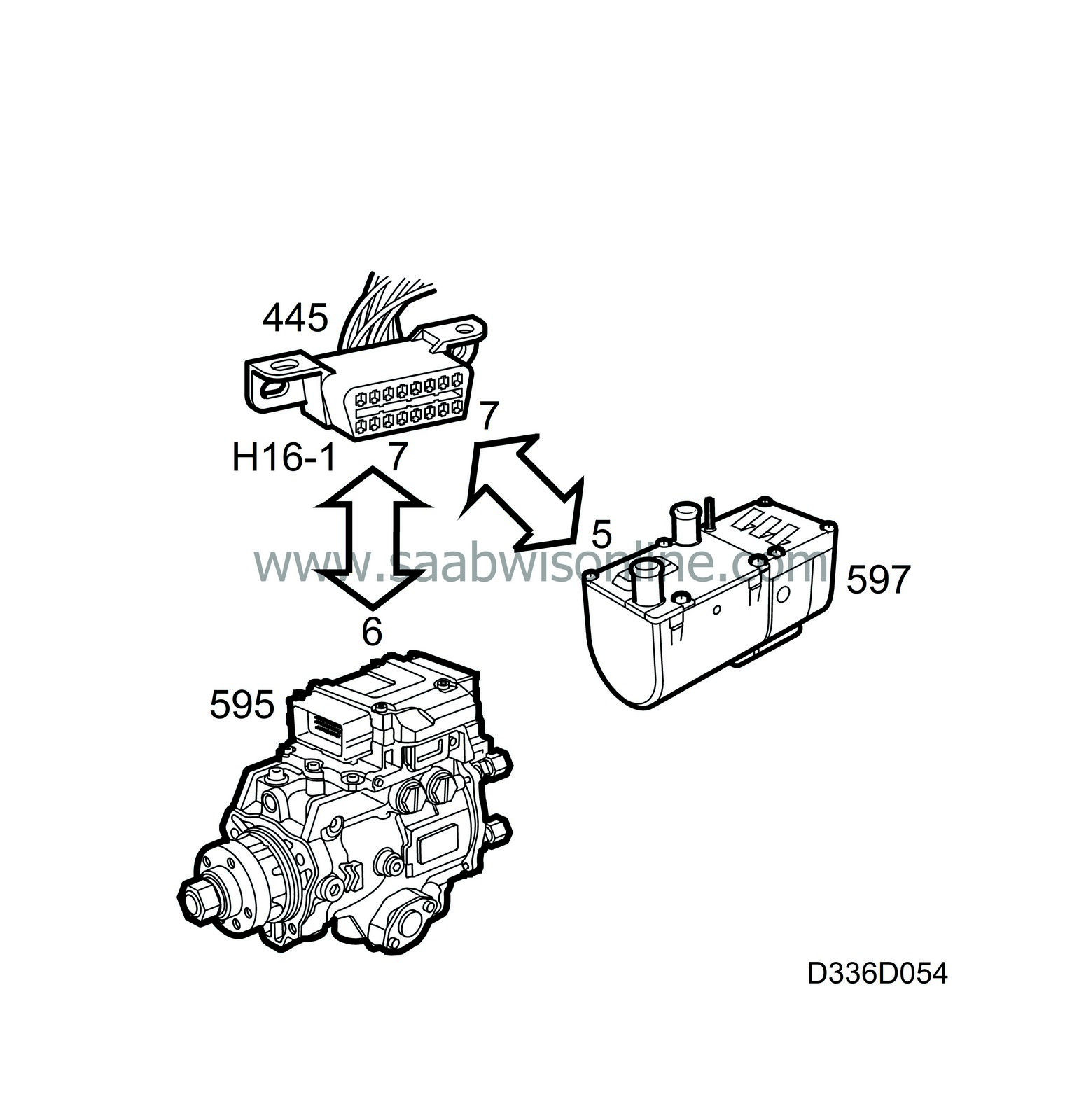
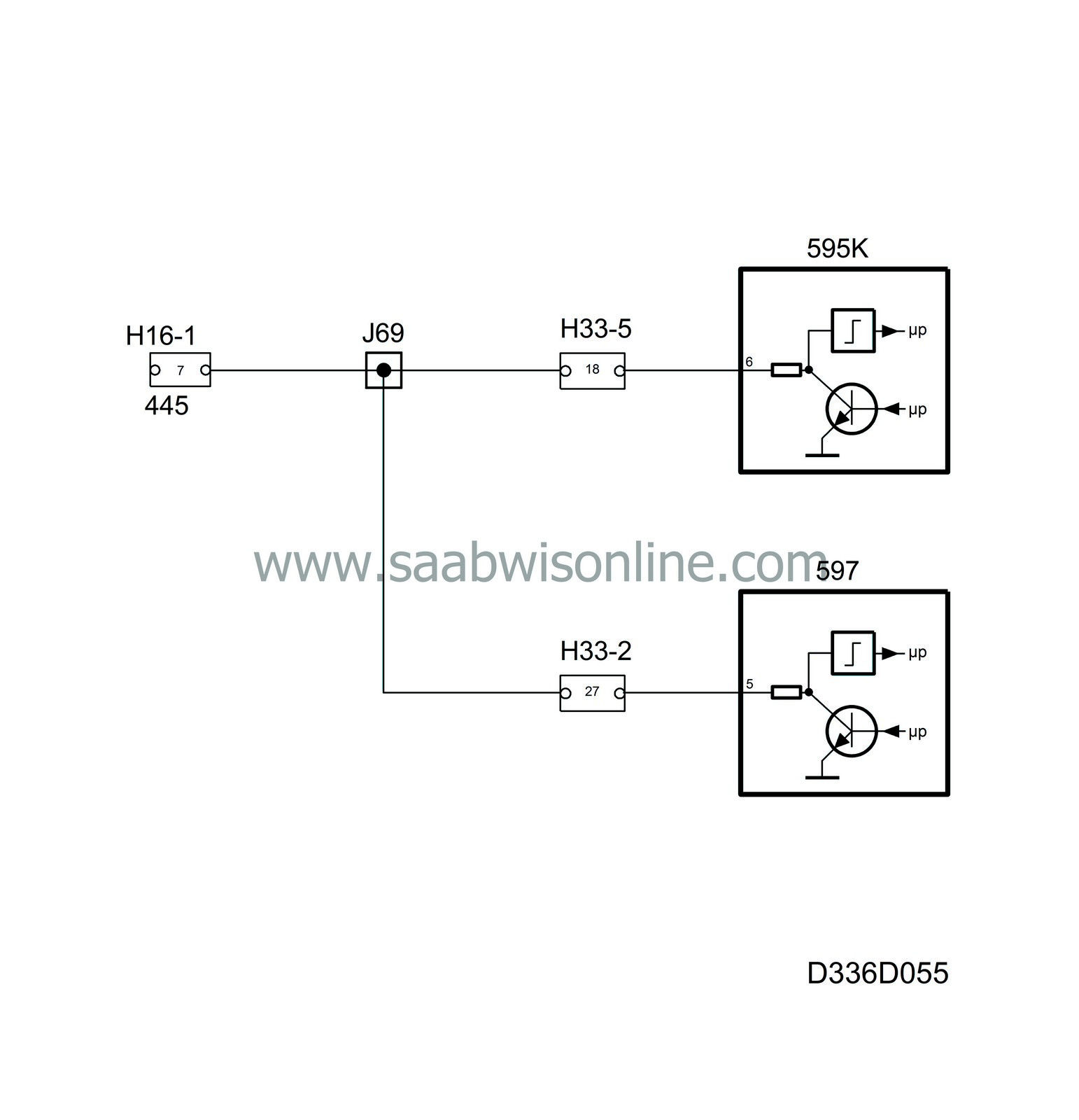
DICE is connected with a communication lead to the data link connector pin 7.
The diagnostic tool communicates digitally and serially with the DICE. Digitally means that the voltage difference between the lead and ground has only two values, in this case about 0 V and B+.
Serial means that the information is sent in ”packets” which are transmitted one after the other in rapid succession.
Through its connection with DICE, the diagnostic tool has access to all the control modules on the bus.
If, for example, MIU is to be contacted, the diagnostic tool first calls DICE.
This means that DICE must be powered (awake) so that MIU can make contact.
Diagnostics
If none of the bus systems can be contacted then the fault must be either in the car or in the diagnostic tool.If the diagnostic tool can make contact with any of the systems concerned in another car, the fault will be in the car.
For further information on fault diagnosis of diagnostic communication with DICE or any other bus-connected system
see Diagnosing the bus .
| Diesel engine control module and DAH |
Diesel engine control module and DAH are each connected to a communication lead to data link connector pin 7.
The diagnostic tool communicates digitally and serially with the selected system. Digitally means that the voltage difference between the lead and ground has only two values, in this case about 0 V and B+. The information is coded so that different combinations of 0 V and B+ pulses have different meanings, like which system is to be called.
Serial means that the information is sent in “packets” which are transmitted one after the other in rapid succession.
Diagnostics
If none of the systems can be contacted, the fault may be either in the car or the diagnostic tool. If the diagnostic tool can contact one of the systems concerned in another car, then the fault is in the car.In this case, first make sure that the control module is awake (as described in the technical data). If it is awake then the fault is probably in the lead between the data link connector and the control module.
| ABS and SRS |


ABS and SRS are each connected to the data link connector pin 8 through a communications lead.
The diagnostics instrument communicates digitally and serially with the selected system. With digital communication the difference in voltage between the lead and ground has only two values, in this case about 0 V and B+. The information is coded so that different combinations of 0 V and B+ pulses have different meanings, such as whether the SRS or ABS is to be called.
Serial means that the information is sent in “packets” which are transmitted one after the other in rapid succession.
The TC/ABS control module on cars with Traction Control is connected to the bus but diagnostic communication takes place via the K line.
Diagnostics
If none of the systems can be contacted, the fault may be either in the car or the diagnostic tool. If the diagnostic tool can contact one of the systems concerned in another car, then the fault is in the car.In that case, first check that the control module is awake. The ABS and SRS warning lamps are tested by the control module as soon as the ignition is switched on. If the control module is awake, then the fault is probably in the lead between the data link connector and the control module.
Diagnostic trouble code P1625 will be generated if there is no communication between Trionic and the TC/ABS control module for 3 seconds while driving.



